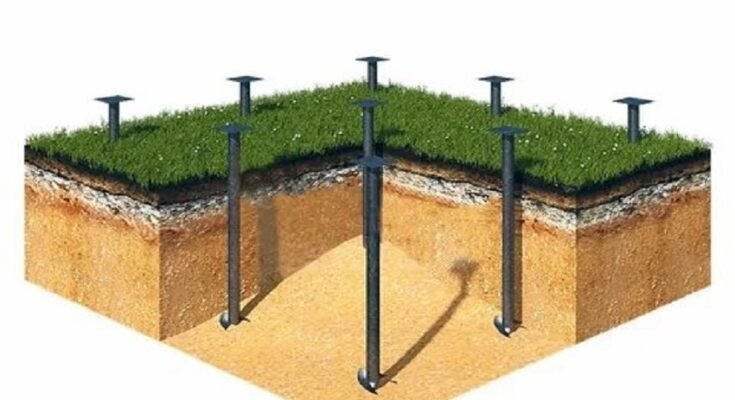Conventional methods for building a foundation usually involve digging a hole in the ground and filling it with concrete. But what if there was a way to make a foundation without all the digging? Introducing screw piles, a new way of building foundations, quickly gaining popularity. Screw piles are exactly what they sound like: piles of metal screws driven into the ground until they hit solid rock. They have several advantages over traditional foundation methods, including speed of installation, versatility, and sustainability.

Are screw piles better than concrete piles?
Are screw piles better than concrete piles? The answer is a resounding yes! Screw piles have many advantages over traditional concrete piles. Perhaps the most obvious benefit is speed. Screw piles can be installed much faster than concrete piles, making them more desirable for contractors and builders. Screw piles are also less labor-intensive and require fewer crew members, meaning that there is less manpower needed on the job site. Additionally, screw piles can be installed in difficult or inaccessible locations, whereas concrete piles require an accessible workspace. And finally, screw piles are much more environmentally friendly than concrete piles – they produce significantly fewer emissions and can be recycled at the end of their lifespan.
The benefits of screw piles
Screw piles are a relatively new type of foundation quickly gaining popularity. Unlike traditional pier and beam foundations, screw piles use metal screws to anchor into the ground. This makes them incredibly sturdy and reliable, especially in unstable soil conditions. Screw piles also have several other benefits, such as being quicker and easier to install than traditional foundations and less disruptive to the surrounding area. They’re perfect for new construction or renovations and can be used for both residential and commercial buildings.

How screw piles work
Pile foundation alternative for a few reasons. Not only are they faster to install, but they’re also more reliable in unstable ground conditions. They work by using a helical screw to anchor the pile into the ground, so they don’t require any additional stabilization. That makes them perfect for soft or wet soil and areas with a high water table. Plus, their modular design means they can be installed almost anywhere. You can see why they’re becoming such a popular choice for foundation construction!
Where can screw piles be used?
Screw piles have a wide range of applications, both on land and water. They can be used as foundations for buildings, piers, bridges, pipelines, and other infrastructure projects. They’re also ideal for residential homes, as they provide a stable and secure foundation that doesn’t require excavation. Plus, screw piles can be used in almost any terrain, from soft soil to solid rock. If you’re looking for an innovative foundation solution, screw piles are worth considering!
Conclusion:
Screw piles are a relatively new construction technology that quickly gains popularity due to its many benefits. Screw piles are more efficient and faster to install than traditional concrete piles, and they are also much more environmentally friendly. Additionally, screw piles can be used in various applications, making them a versatile choice for foundation construction.




